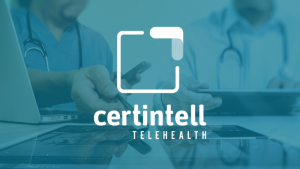This is a special feature that had been produced or updated for National Health Center Week (NHCW). NHCW brings awareness to the various challenges health centers and their patients face and recognizes that patient health starts at the heart of their communities.
Community Health Centers are key to the infrastructure of a community. Health Centers invest in human capital, generate economic activity and, most importantly, provide quality access care to underserved community members. Millions of Americans are left uninsured, but health centers are able to serve these patients regardless of their ability to pay.¹ At the core of these Health Centers is the Health Center Staff.
A solid Health Center staff is essential for Health Centers to function to their full potential. The staff is responsible for giving the highest quality care to all patients, while also running an organized and timely system. The services brought to patients are made possible by a hardworking health center staff and set of volunteers.
Health Center Staff provide these services to care for individual’s health needs;
- Primary Care Services
- Mental Health
- Dental Health
- Substance Use Treatment Services
- Chronic Care Management
- Vision Care Services
- Family Planning
- Social Services
- Health Education
Health centers are providing these services with an increasing reliance on the use of telehealth,³ with health centers currently delivering an average of 20 percent of visits virtually.⁷
Health Center Staff are also incredibly important because they are a huge source of care for Medicaid enrollees.
Community health centers serve over 31 million patients across the US, with around 15 million patients being enrolled in Medicaid. Nationally, one in six Medicaid patients receive care through a health center.⁴
These staff individuals deserve recognition for their dedication to providing quality care to individuals and communities in need. However, the number of patients requiring care is on the rise, requiring additional staffing and facilities.
OUR OBSERVATION: The rising number of patients in need of care is pushing clinics to their full capacities. It is difficult to recruit enough staff members and health care providers to serve communities. Barriers to recruitment include low-paying salaries, cultural isolation, poor-quality schools and housing, and lack of spousal job opportunities. Community Health Centers are facing challenges recruiting clinical staff, particularly in rural areas.⁵

OUR SOLUTION: Doctor visits can be done remotely through Certintell’s telehealth services, saving providers time, and allowing them to see more patients. Certintell provides care coaches which enables health clinics to treat patients with properly certified physicians, without making their days busier. Health Center Staff will still be able to provide all of their services to patients, just through a less expensive and more time efficient manner. Patients will also benefit from the services provided by telehealth, which is always Health Center Staff’s main concern.
SOCIAL SPOTLIGHT: #HEALTHCAREHEROES
For all the arduous work health center staff has undertaken the past five months, many community members have taken the time to show a token of appreciation for their health care heroes. Here are some of our favorite posts from social the past few months celebrating all that they do:
Thank you for giving community health centers a voice. #ValueCHCs #FQHCs https://t.co/44mX4Q8t4M
— HCAdvocacy Network (@HCAdvocacy) July 10, 2020
“It’s not what we have, but who we have.” COVID-19 is a large pandemic, but the strength of our health care heroes who go above and beyond every day for our patients is greater! Check out this thoughtful thank you card to our staff! pic.twitter.com/X1tYO19xl5
— UPMC Pinnacle (@UPMC_Pinnacle) April 15, 2020
“We are the heart of the operation for cleaning the entire hospital 🏩. The team is going above and beyond, bringing their A-game.” – Mohamed Dassouli, Environmental Services
Please support our health care heroes and patients during the #COVID19 surge 📈: https://t.co/AUGRzc0P1i pic.twitter.com/ZmEA4JofEf
— BostonMedicalCenter (@The_BMC) April 24, 2020
Yakima Valley Farm Workers Clinic CEO, Carlos Olivares, speaks directly to our elected officials about the urgent need for support. #ValueCHCs #SaveCHCs @PattyMurray @SenatorCantwell @RepNewhouse @cathymcmorris @OregonPCA @RonWyden @SenJeffMerkley pic.twitter.com/MWHLWaw3PY
— Yakima Valley Farm Workers Clinic (@YVFWC) May 28, 2020
GET ACTIVE
➠ Review the Advocacy Center of Excellence program which strives to teach people how to care about each other before they need health care.
➠ Download the Advocacy Work Plan Content Outline from the Health Center Advocacy Network and plan how you will advocate for your local CHC.
This article was first featured as a part of Certintell’s 2019 National Health Center Week efforts to support the awareness, advocacy and celebration of Community Health Centers during the annual week-long event. The original content has been expanded to provide more value to the reader.
SOURCES:
¹ Cohen, Patricia. “About 30 Million Workers Are Collecting Jobless Benefits.” The New York Times, 24 July 2020, www.nytimes.com/live/2020/07/23/business/stock-market-today-coronavirus.
² Health Resources and Services Administration. “Health Center COVID-19 Survey.” Bureau of Primary Health Care, 17 July 2020, bphc.hrsa.gov/emergency-response/coronavirus-health-center-data.
³ “Community Health Centers: Recent Growth and the Role of the ACA – Issue Brief.” Henry J. Kaiser Family Foundation, 18 Jan. 2017, www.kff.org/report-section/community-health-centers-recent-growth-and-the-role-of-the-aca-issue-brief.
⁴ “One Year Later, Medicaid Unwinding Impacts Community Health Centers & Patients“ NACHC, 3 Apr. 2024, https://www.nachc.org/one-year-later-medicaid-unwinding-impacts-community-health-centers-patients/
⁵ Rosenblatt, Roger A., et al. “Shortages of medical personnel at community health centers: implications for planned expansion.” PubMed. comprises. more. Than.
⁶ 9 million. citations. for. biomedical. literature. from. MEDLINE, life. science. journals., and. online. books., vol. 295, no. 9, 1 Mar. 2006, pp. 1042-9, doi:10.1001/jama.295.9.1042.
⁷ Lee, Euny C., et al. “Updated National Survey Trends in Telehealth Utilization and Modality (2021-2022).” ASPE Office of Health Policy Issue Brief. https://aspe.hhs.gov/sites/default/files/documents/7d6b4989431f4c70144f209622975116/household-pulse-survey-telehealth-covid-ib.pdf



